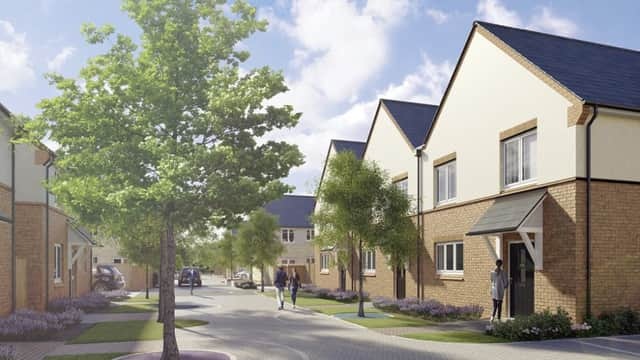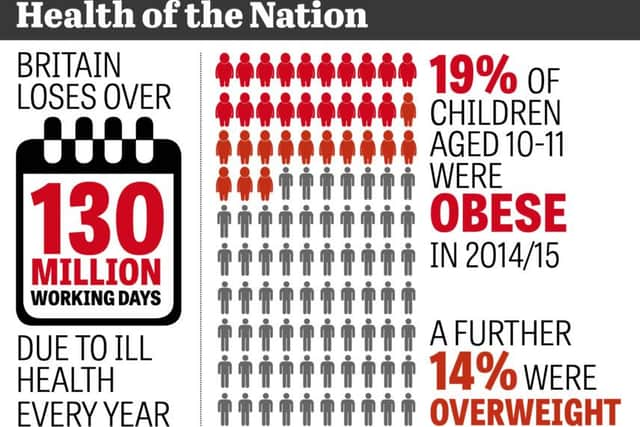Bicester's Elmsbrook project announced as '˜healthy new town'


Chief executive Simon Stevens will use a speech to the King’s Fund in London to name the sites.
One of the schemes identified is the Elmsbrook project, Bicester, in Oxon. Bicester, There are 393 houses in the Elmsbrook project, part of 1,300 new homes planned.
Advertisement
Advertisement
The NHS will help shape the way these new sites develop, testing creative solutions for the health and care challenges of the 21st century, including obesity, dementia and community cohesion.


NHS England is bringing together renowned clinicians, designers and technology experts to reimagine how healthcare can be delivered in these places, to showcase what’s possible by joining up design of the built environment with modern health and care services.
Mr Stevens says: “The much-needed push to kick-start affordable housing across England creates a golden opportunity for the NHS to help promote health and keep people independent.
“As these new neighbourhoods and towns are built, we’ll kick ourselves if in ten years time we look back having missed the opportunity to ‘design out’ the obesogenic environment, and ‘design in’ health and wellbeing.”
Advertisement
Advertisement
Options to be tested at some of these sites include fast food-free zones near schools, designing safe and appealing green spaces, building dementia-friendly streets and ensuring people can access new GP services using digital technology.


Mr Stevens will point to facts showing that:
Britain loses more than 130 million working days to ill-health each year.
19 per cent of children aged ten to 11 were obese and a further 14 per cent were overweight in 2014/15. The figures for four to five-year-olds were 9 per cent obese and 13 per cent overweight. In other words, the proportion of children who are obese doubles during primary school – from one in ten five-year-olds, to one in five eleven-year-olds.
Today only 21 per cent of children play outdoors, compared with 71 per cent of their parents when they were children, Design Council figures show.
Advertisement
Advertisement
A Design Council guide also estimates that a quarter of British adults now walk for less than nine minutes a day.
Physical inactivity is a direct factor in one in six deaths, and has an overall economic impact of £7.4 billion.
The Building Research Establishment has published a report on the cost of poor-quality housing to the NHS. It estimates that the 3.5m homes in England that have serious hazards such as damp and pests have led to health problems that cost the NHS at least £1.4bn every year.
Professor Kevin Fenton, national director for health and wellbeing at Public Health England said: “Some of the UK’s most pressing health challenges – such as obesity, mental health issues, physical inactivity and the needs of an ageing population – can all be influenced by the quality of our built and natural environment.
Advertisement
Advertisement
“The considerate design of spaces and places is critical to promote good health. This innovative programme will inform our thinking and planning of everyday environments to improve health for generations to come.”
Elmsbrook is not the only area chosen in Oxfordshire either.
Barton Park in Oxford, which has 885 residential units, is another on the list of 10.
The other developments selected to be ‘healthy new towns’:
Whitehill and Bordon, Hampshire – 3,350 new homes on a former army barracks. A new care campus will co-locate ‘care-ready homes’ specially designed to be adaptable to the needs of people with long-term conditions with a nurse-led treatment centre, pharmacy and integrated care hub.
Advertisement
Advertisement
Cranbrook, Devon – 8,000 new residential units. Data suggests that Cranbrook has three times the national average of children under the age of four and will look at how prevention and healthy lifestyles can be taught in schools from a young age.
Darlington – 2,500 residential units across three linked sites in the Eastern Growth Zone. Darlington is developing a ‘virtual care home’ offer where a group of homes with shared facilities are configured to link directly into a digital care hub, avoiding institutionalisation in nursing homes.
Barking Riverside – 10,800 residential units on London’s largest brownfield site.
Whyndyke Farm in Fylde, Lancashire – 1,400 residential units.
Halton Lea, Runcorn – 800 residential units.
Northstowe, Cambridgeshire – 10,000 homes on former military land.
Ebbsfleet Garden City, Kent – up to 15,000 new homes in the first garden city for 100 years.